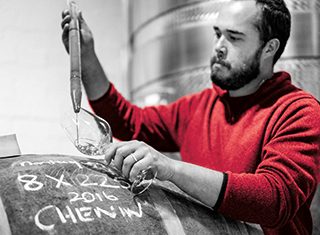It’s limiting to define what a good wine should taste like. Imagine how dull it would be if all wines were made in that style! 
At university we were taught what a good wine should taste like and how these wines are made. For example, the grapes should be picked at a certain ripeness and have sufficient concentration and the wine should be matured in oak. While some of the best wines I’ve had the pleasure of tasting complied with these requirements, the rest were wines made without oak, lighter in colour and with elegance rather than power. This goes to show there are different styles of wine that can deliver the same impact and gratification as their heavier counterparts.
Imagine how boring the wine world would be if we didn’t have perfumed, slightly chilled Cincauts to drink on a hot day. Or tannic Barolos that pair well with the main meat dish on the menu. Think about a world with no funky oxidative whites from the Jura next to a ripe cheese to end the evening. I’m salivating at the mere mention of all these examples!
At the top of my bucket list is to explore more winemaking regions in the world and to better understand the history behind their wines and why they’ve been made in a certain style for so many centuries. I remember last year when winemaker friend Lukas van Loggerenberg of Van Loggerenberg Wines and I were tasting wine in the Loire valley at Domaine de Chevalier. The winemaker had opened an old bottle of Cabernet Franc and we asked her if she thought it was a good wine. She retorted her great-grandmother had to make this wine while her great-grandfather was fighting in the war so how could anyone have the audacity to decide if it was good or not.
This made me realise that the beauty behind wine is not necessarily what we learn in a textbook, but that there’s a lot more meaning and value to wine when made by passionate people under unique circumstances. There’s obviously a long list of variables to consider: vintage differentiations, vineyard age, terroir, vinification techniques and in particular the unique people behind every wine.
Great wines will always tell a story. It’s a shame so many of these are just sipped and spat out at tastings. We’re missing the pleasure of drinking them over a few hours, experiencing how they develop and savouring their subtle expressions.
When we start looking at wines from a new perspective we’ll start enjoying them more and for what they are. We’re all guilty of criticising a wine before we even try to look at the positive attributes. I would never suggest we should praise a wine for just being different if it’s faulty or of an inferior quality, but it’s important to be open to all styles.
To choose a favourite among the different styles of wines is impossible. Sure, you may have a personal favourite, but sticking to that without enjoying and experiencing other styles for what they are, shackles the experience of making and enjoying wine.
The dark fruit, pencil lead and dense concentration of a Stellenbosch Cabernet Sauvignon, the crushed herbs, olive tapenade and saline taste of a Northern Rhone Syrah or the focused acidity and fresh citrus zest of an Elgin Chardonnay all contribute to the joy of being a wine drinker and not just a winemaker. There’s definitely a wine for every occasion and taste.













